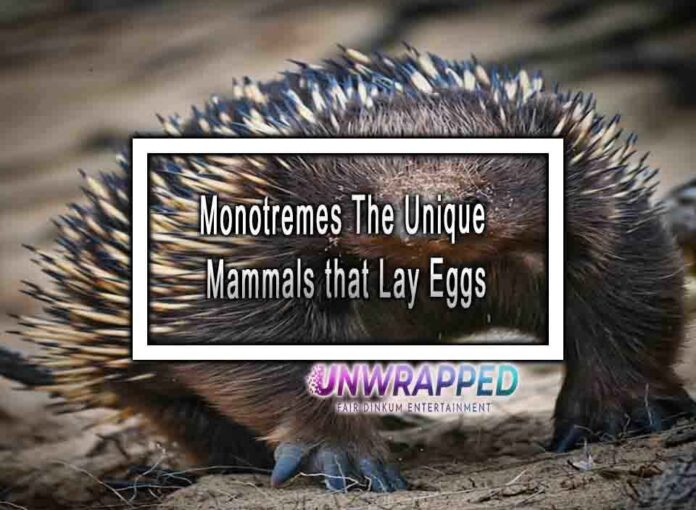Monotremes are a group of unique mammals that lay eggs, distinguishing them from most other mammals that give birth to live young. These remarkable creatures are characterized by several distinctive features and behaviors. Here’s an overview of monotremes and their fascinating characteristics:
1. Egg-Laying:
- Monotremes are the only group of mammals that lay eggs rather than giving birth to live offspring. They are oviparous, which means they lay eggs. The eggs are leathery, not hard like reptile eggs, and are incubated outside the mother’s body.

2. Limited Number of Species:
- There are only five extant species of monotremes, making them a relatively small and unique group of mammals. These species include the platypus and four echidnas, also known as spiny anteaters.
3. Unique Reproductive Anatomy:
- Male monotremes have a cloaca, a single opening that serves as both the reproductive and excretory tract. Females also have a cloaca, but they have specialized mammary glands that secrete milk to nourish their young.
4. Venomous Spurs:
- Male platypuses have venomous spurs on their hind legs. While the venom is not lethal to humans, it can cause severe pain and swelling. It is believed that the spur is primarily used during competition with other males.
5. Mammalian Features:
- Despite their egg-laying ability, monotremes share several mammalian characteristics. They have hair or fur covering their bodies, produce milk for their young, and are warm-blooded.
6. Unique Senses:
- Monotremes have unique sensory adaptations. The platypus, for example, has a highly sensitive bill that can detect electrical signals produced by the muscles and nerves of prey underwater.
7. Dual Reproductive System:
- Female monotremes have a dual reproductive system, with both ovaries functional. This is in contrast to most mammals, where only one ovary is typically active.
8. Egg Incubation:
- Monotreme eggs are laid in a nest or burrow, and they are incubated by the mother. The mother curls around the eggs to keep them warm until they hatch.
9. Geographic Distribution:
- Monotremes are found in Australia and New Guinea. The platypus is native to Australia, while echidnas are found in both Australia and New Guinea.
10. Dietary Habits:
Monotremes have diverse diets. Platypuses primarily feed on aquatic invertebrates, while echidnas are insectivores, consuming ants, termites, and other small prey.
Monotremes represent an ancient and unique branch of mammalian evolution. Their egg-laying adaptation is believed to be an ancestral trait of mammals, and the study of monotremes provides valuable insights into the evolution of reproduction and other biological features in mammals. These fascinating creatures continue to captivate scientists and nature enthusiasts with their distinctive characteristics and behaviors.











